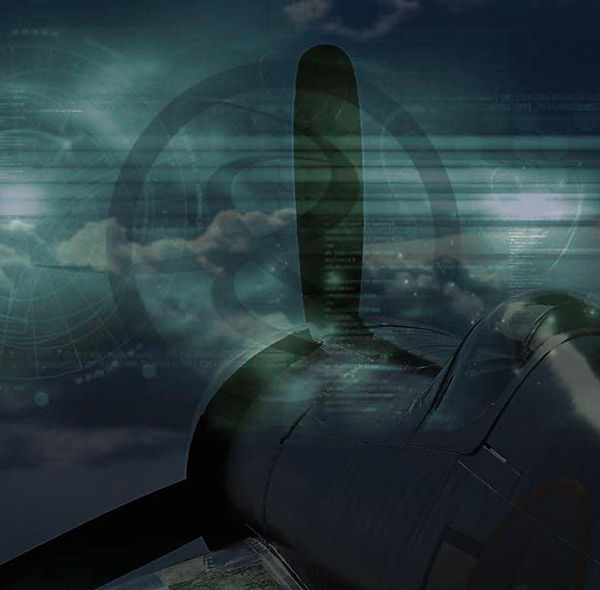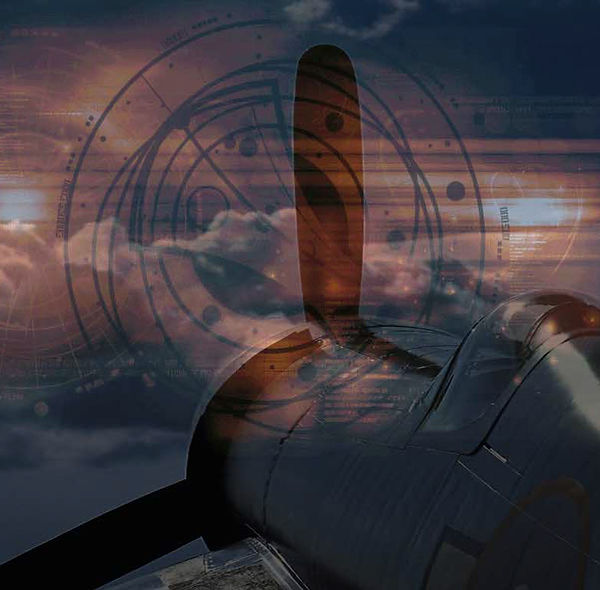
Hold your pointer on a tab in the menu on top of the page to view and handle the sub menus.



ARGENTINE NAVAL AVIATION F4U Corsair (*)
HISTORY
The operating life of the Corsair in the Argentine naval aviation began in August 1956, with the creation of the Escuadrilla Aeronaval de Batalla (Navy Air Battle Squad). But the history of this airplane in the Armada Argentina (Argentine Navy) begins even a year earlier, when they were acquired from a surplus of the US Navy. In a beginning, it was first thought to acquire the Douglas Skyraider, but due to France being in war in Argelia, the USN prioritized the sale of those airplanes to the French Aeronavale, for they were commercially more interesting. Parallel to this Argentine request, the USN did an offering for two models of the known Corsair: the F4U-4 and the F4U-5, for a bigger price.
The purchase of this latest model was decided by the model itself because it had greater performances and less years of service. 12 airplanes of the model F4U-5 were acquired initially and they were stored for some time. They would have to travel through very poor conditions (every plane needed a new engine) and they were taken to zero by a private firm (Aerocorporation), located in Atlanta , USA. It was a business which should provide Argentine mechanics with enough help. Almost immediately, 10 other airplanes were bought, of the model F4U-5N/NL,
equipped with the AN/APS-19 radar (becoming the first military airplane of South America equipped with radar), automatic pilot and automatic fire extinguishers in the engine (which had a remarkable exhaust with a square shape, as opposed to the round exhausts of the F4U-5). Additionally, in May 1957, eight more airplanes of F4U-5NL were bought to replace the initial losses (some airplanes were lost due to the little experience of the pilots). Of those eight airplanes, three were incapable for being a replacement. The first to arrive in the country was the F4U-5N/NL. They were first transported by the maritime way in July 1956 to the port of La Plata and then they were loaded onto trucks. Those carried them to the Punta Indio Navy Air Base, where they formed the “Escuadrilla de Combate Nocturno” (Night Fighting Squad), that was put in operation, even though the planes had just arrived and still needed a full check-up and a new paintjob.
In August 1957, they arrived in flight ferry (some they say that it was the longest one ever recorded in Argentine history) from the USA . The 11 remaining airplanes (one was lost in an accident in the USA ) and their pilots formed the active “Escuadrilla de Combate Diurno” (Day Fighting Squad). However, it must be noted that before the purchase was summarized of the Independencia aircraft carrier in 1958, the Corsair crew had already practiced landings on a runway of Punta Indio with had a simulated carrier deck and was even equipped with brake lines, under British officials direction. Between June and July 1959, the first couplings and take-off from an aircraft carrier, carrying Argentine airplanes, were carried out. During the revolt of April 1963, the F4U performed attacks in the proximity of Punta Indio and Magdalena .
The result was a downed plane (0384/3-A-211) and other planes with varying damage. Near the end of its operating life, the Corsair performed exercises with airplanes of the F9F-2 Panther model, but the Corsair already began to show failures in its old structure. In 1965, only an average flight of a dozen planes remained active, but they had the tendency to suffer from their age, resulting in accidents. The most common of those accidents was the loss of oxygen pressure in the cockpit, or the emanation of gasses from the engine into the interior of airplane. Due to a series of fatal accidents, in January 20, 1966, the 2nd Escuadrilla de Ataque (Attack Squad) was retired, although their airplanes already stopped flying since the end of November 1965.
Before explaining how the planes were registered, it is necessary to explain the identification system utilized by the “Aviación Naval Argentina” (Argentine Naval Aviation). Since 1930, an airplane was assigned a registration number, composed of four digits, which were invariable and unique to each airplane, followed by an alphanumeric characteristic that identifies not just the airplane, but also the squad to which it belongs. Thus, for example, an airplane of the Squadron N° 2 and of the 3rd Escuadrilla de Ataque (Attack Squad) will be identified as 2-A-3XX. This characteristic changes are assigned to airplanes of distinct squads. Initially, the airplanes had reserved a series of registration numbers, ranging from the 0374 to the 0395 (0374 to 0383 for the Escuadrilla Nocturna -Night Squad- and 0384 to the 0394 for the Escuadrilla Diurna –Day Squad-).
To the last five airplanes positions were the registration numbers 0395 and 0432 to 0435 reserved. Upon being assigned to the 3° Escuadrón Aeronaval (Air Naval Squadron), during the first years you were identified as 3-C-1 to 3-C-22, but after 1959 -date in which the Flotilla de Batalla (Battle Fleet) was called 2da Escuadrilla de Ataque (Attack Squad) (Which is now the 2° Escuadrón Aeronaval (Air Naval Squadron) in Punta Indio), the airplanes carried the registration number 2-A-201/224 (note that the number of airplanes in service was 24, instead of 35).
Since 1964, the survivors airplanes was identified as 3-A-2XX, when were transferred again to the 3° Escuadra Aeronaval, in Comandante Espora base. In all the airplanes, the registration number was painted in both sides of the fuselage behind the cockpit, with the rounded shield of the Aviación Naval (Naval Aviation) being painted behind it, in a place at the beginning of the tail. However, the last two number of that were painted at the rear of the rudder, and on the main landing gear front doors. On the engine hood the numbers of the airplane were painted under the legend MARINA DE GUERRA (War Marine) –1956/60-, ARMADA NACIONAL (National Navy) –1960/beginning 1964-, ARMADA (Navy) -1964/66-.
The USN Buaer number was painted under the tailplanes on both sides, and their size was not standardized. And since 1960, it was common to paint the pilot name underneath the cockpit of some airplanes.
In the nocturnal models, on the left side were the insignia of the 2da Escuadrilla (squad) painted, which was called the "Parrot", which was an adaptation of the emblem of the squadron VF-144 “Bitter Birds”, of the US Navy.
As for the colors, the nocturnal models were painted in this country totally in Non Specular Sea Blue (FS 35042), including the landing gear and wells, while the F4U-5 were painted in Light Gull Gray (FS 36440) and the lower surfaces in Insignia White (FS 17875), with landing gear, covers and wells in Insignia White.
Two airplanes existed as an exception to that rule, the F4U-5 0393/3-A-212, that was painted in the nocturnal scheme, and the F4U-5N 0435/3-A-213, painted in the diurnal scheme. In all the airplanes, an antiglare panel in front of the cockpit was painted in mat black and for the airplanes with diurnal scheme, an area in Middle Gray was added to remove the black one coming from the gases of the engine-exhaust. The traditional anchor of the naval airplanes was the four wing positions, although they differed in size and location. The color, the same one as the numbers, was white for nocturnal and black for the diurnal airplanes.
The national insignia was painted upon the mobile fabric surfaces of the tailplanes and rudder, with the sun in yellow color. When the airplane was flown by the Unit Commander, a little flag was added that consisted of a white triangle with an horizontal light blue line in his middle (although it was initially rounded with the light blue line painted at the edges). If the plane was flown by a Division Commander, it consisted of a white triangle, but with the line in vertical position.
(*) : Index - References - Notes - Citations